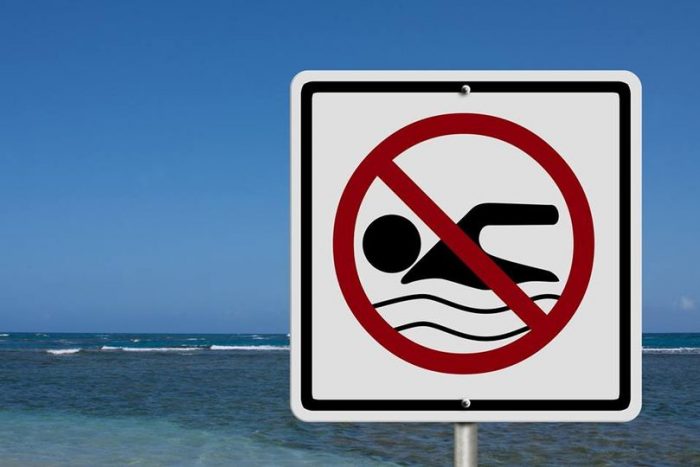By Daniel Dunaief
Some groups of people on Long Island have a much higher incidence of a particular type of cancer than others.
On an age adjusted rate, African American men, for example, were almost twice as likely to develop prostate cancer from 2014 to 2018 as Caucasians. Out of 100,000 African American men, 216.6 had prostate cancer compared with 123.9 out of 100,000 white men, according to data from the National Cancer Institute.

Dr. Linda Mermelstein, Associate Director of Stony Brook Cancer Center’s Office for Community Outreach and Engagement, is working with her team to address those stark differences and to empower members of the community to protect their health and make informed decisions.
“A lot of our focus is on addressing disparities” in cancer care in various communities throughout Long Island, Dr. Mermelstein said.
The Cancer Center Outreach and Engagement office has taken numerous steps to inform the public about research and care. The center has a Mobile Mammography Unit, which travels into communities to provide access to screening for breast cancer.
On June 5, at the Latina Sisters Support Inc. Spanish Fair in Brentwood, the Cancer Center’s Community Outreach and Engagement staff provided mobile mammography screening and cancer prevention and screening education.
At that event, the Suffolk County Department of Health Services provided human papillomavirus and Covid-19 vaccines and Stony Brook School of Health Professionals offered blood pressure screening.
An information chasm

Dr. Jedan Phillips, Medical Director for Stony Brook Health Outreach and Medical Education and Associate Professor of Family, Population and Preventive Medicine at the Renaissance School of Medicine, explained that Covid-19 exposed the “chasm” between what the health care profession believed and the reality of what works and what doesn’t.
During the pandemic, Stony Brook University brought a vaccination pod to Uniondale in Nassau County, which is a predominantly African American community. “Because we had no relationship there, we might have wasted over 200 doses of the vaccine” as residents were reluctant to get vaccinated, he said. “Even though [Stony Brook] offered something that would help, people chose against it. It’s not about the vaccine. It’s something deeper.”
Dr. Phillips said East Elmhurst, Queens, where he grew up, was “ravaged by Covid. I know at least 10 people in my community who were regular figures in my life that died. I saw how vulnerable of a position we were in as a group and I felt I needed to get involved.”
Dr. Phillips, who has a family medical practice in East Patchogue, together with Dr. Yuri Jadotte, Assistant Professor and Associate Program Director for the Preventive Medicine Residency in the Department of Family, Population and Preventive Medicine at Stony Brook, created three focus groups to survey the views and understanding of African American men on prostate cancer.
Many African American men don’t get screened for prostate cancer, even though such screenings could lead to earlier treatment and better outcomes.
By listening to what inspires African American men throughout Long Island to take action, Dr. Phillips hopes to tailor information to that type of delivery.
“It’s important to listen and understand,” Dr. Phillips said. Understanding what motivates people and seeking to provide the formats in which they prefer to access information can help establish a community connection and demonstrate cultural compassion.
Part of Dr. Phillips’s focus on preventive medicine comes from his experience with his father, who died from complications related to diabetes. His father, who was an inspiration for him, “didn’t live life in a preventive way,” which made managing his health more difficult, Dr. Phillips said.
With the numerous programs offered by the Office for Community Outreach and Engagement, Dr. Mermelstein said the group has four primary goals.

“We want to monitor and understand what is the cancer burden in our catchment area” which includes Nassau and Suffolk County, she said. “Much of our activities are identifying the issues in terms of cancer” and understanding any barriers towards cancer care, like education, screening, diagnosis and treatment.
Secondly, she wants to provide cancer prevention services, screening, education and community navigation. Third, the group has a bi-directional engagement, with researchers getting to know the community and community advocates and the community learning about the research process.
Finally, the group seeks to catalyze the research by focusing on disparities, providing research services to the entire community based on specific needs.
One of Dr. Mermelstein’s first actions after heading up this team in 2019 was to create a community advisory council for the Stony Brook Cancer Center.
Janine Logan, Vice President of Communications and Population Health with the Long Island Health Collaborative, serves on that advisory council.“What I’m most excited about is that the committee understands the importance of knowing what your community thinks and needs,” Logan said.
Logan is pleased with the work the Stony Brook Cancer Center has done to educate residents about the lifestyle behaviors that can contribute to cancer, such as smoking, inactivity, and nutrition.
“They’ve done a lot of work in reaching out and educating communities to help them understand that these simple, modifiable behaviors can reduce their risk” of developing cancer, Logan said.
The effort at the Cancer Center to educate the public about the danger’s of the sun dovetails with some of the work she has done at the Long Island Health Collaborative.
Indeed, the Cancer Center Community Outreach and Engagement hosted a “Block the sun, not the fun” gathering on May 7 at the Smith Haven Mall in Lake Grove.
The Stony Brook Cancer Center is also working with the Suffolk County Department of Health Services Cancer Prevention and Health Promotion Coalition to provide information about sunscreen safety.
In addition to the disparity among African American men who develop prostate cancer, the outreach effort also addressed the difference among hispanic women who have a higher incidence of cervical cancer than the non-hispanic Caucasian population.
In Suffolk County, about 10.2 Hispanic and Latino women out of 100,000 Hispanic and Latino women develop cervical cancer, which is higher than the 5.9 per 100,000 for white, non-Hispanic women, according to the National Cancer Institute.
Human papillomarvirus is estimated to cause about 36,500 cases of cancer in men and women every year in the United States. The HPV vaccination, which works best before exposure to the virus, can prevent 33,700 of those cancers. Because the vaccine doesn’t prevent all cancers, women still need screening to protect themselves.
Previously employed for 22 years with the Suffolk County Department of Health Services, Dr. Mermelstein, who has a medical degree and a master’s in public health, briefly retired, before taking this job at Stony Brook.
“I wanted to do something to help address cancer after I retired, and so I contacted Stony Brook Cancer Center and began in this position about four months after I retired,” she explained.
Those interested in reaching out to the Office for Community Outreach and Engagement can call 631-444-4263 or email [email protected].





















